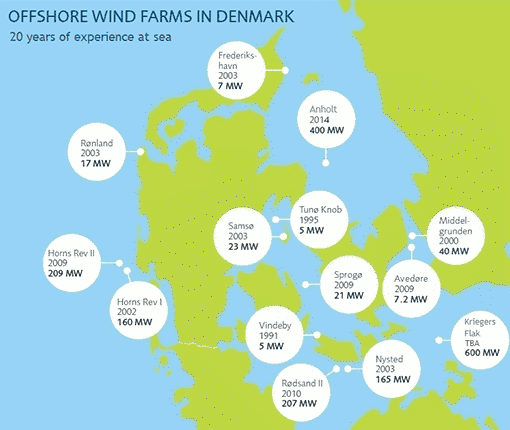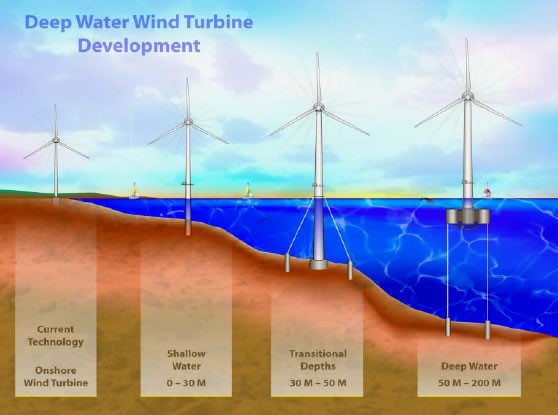From 2GreenEnergy Intern Louis de Saint Phalle: Offshore Wind Overview
Offshore wind is a great method to harness energy in an environmental friendly and sustainable way. Rather than building wind farms on land, massive wind turbines are constructed in bodies of water to generate electricity. This resolves the “Not in My Back Yard” issue as offshore wind farms are typically located far away from residential areas.
In Europe, Denmark is leading the way in integrating wind power into the electricity system. About 28 percent of its electricity comes from wind power. As a first-mover in wind power technology, Denmark has already become an industry leader in production, design and installation of wind turbines. To date, Danish companies have installed more than 90 percent of the offshore wind turbines worldwide.
Here in the U.S., Cape Wind is nearing construction to become America’s first offshore wind farm. The wind farm will be located in Federal waters off the coast of Cape Cod, Massachusetts. Such location has all of the characteristics to be the optimal location for offshore wind farm due to its geographic location and wind strength. Construction will commence shortly following the completion of project financing during the second half of 2014.
In Asia, India’s Ministry of New and Renewable Energy has identified Tamil Nadu, India as a destination for significant offshore wind potential. Currently, obstacles to offshore wind deployment in India include resource identification, grid interconnection, operation and adequate transmission infrastructure. However, given that the state of Tamil Nadu is already holding 40 percent of India’s onshore wind capacity, integration of offshore wind into its current electricity system is plausible.
Wind turbine technology is already at a fairly mature stage. Onshore wind farms have proven to be effective and the costs of wind electricity production have come down over the years. Improvements will continue and prices will decline over time.
The future of offshore wind is promising, and it will steadily become more economical. Rather than having companies to compete for more valuable land space to construct wind farms, much of the bodies of open water near land can now be utilized for that purpose. Moreover, offshore wind turbines pose essentially zero safety hazards to birds and bats, and no noise to disturb our daily lives; we will hardly notice their existence.



